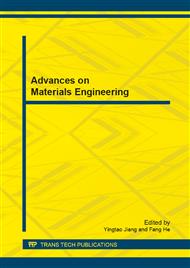p.28
p.33
p.38
p.45
p.50
p.55
p.60
p.69
p.74
Effects of Fly Ash/Slag Ratio and Liquid/Binder Ratio on Strength of Alkali-Activated Fly Ash/Slag Mortars
Abstract:
The purpose of this study is to investigate the effects of fly ash/slag ratio and liquid/binder ratio on strength of alkali-activated fly ash/slag (AAFS) mortars. Three liquid/binder ratios of 0.35, 0.5 and 0.65 and three fly ash/slag ratios of 100/0, 50/50, and 0/100 were selected as variables to design and produce mixes of AAFS mortars. The compressive strength and flexural strength of alkali-activated fly ash/slag mortars were discussed and compared with reference mortars produced using ordinary Portland cement (OPC) mortars. Based on the results, both fly ash/slag ratio and the liquid/binder ratio are significant factors influencing the strengths of AAFS mortars. The strength of AAFS mortars except alkali-activated fly ash mortars is higher than that of OPC mortars. When the fly ash/slag ratio reaches 50/50, the AAFS mortars possesses the highest strength compared with the other mortars.
Info:
Periodical:
Pages:
50-54
Citation:
Online since:
August 2013
Authors:
Price:
Сopyright:
© 2013 Trans Tech Publications Ltd. All Rights Reserved
Share:
Citation:


